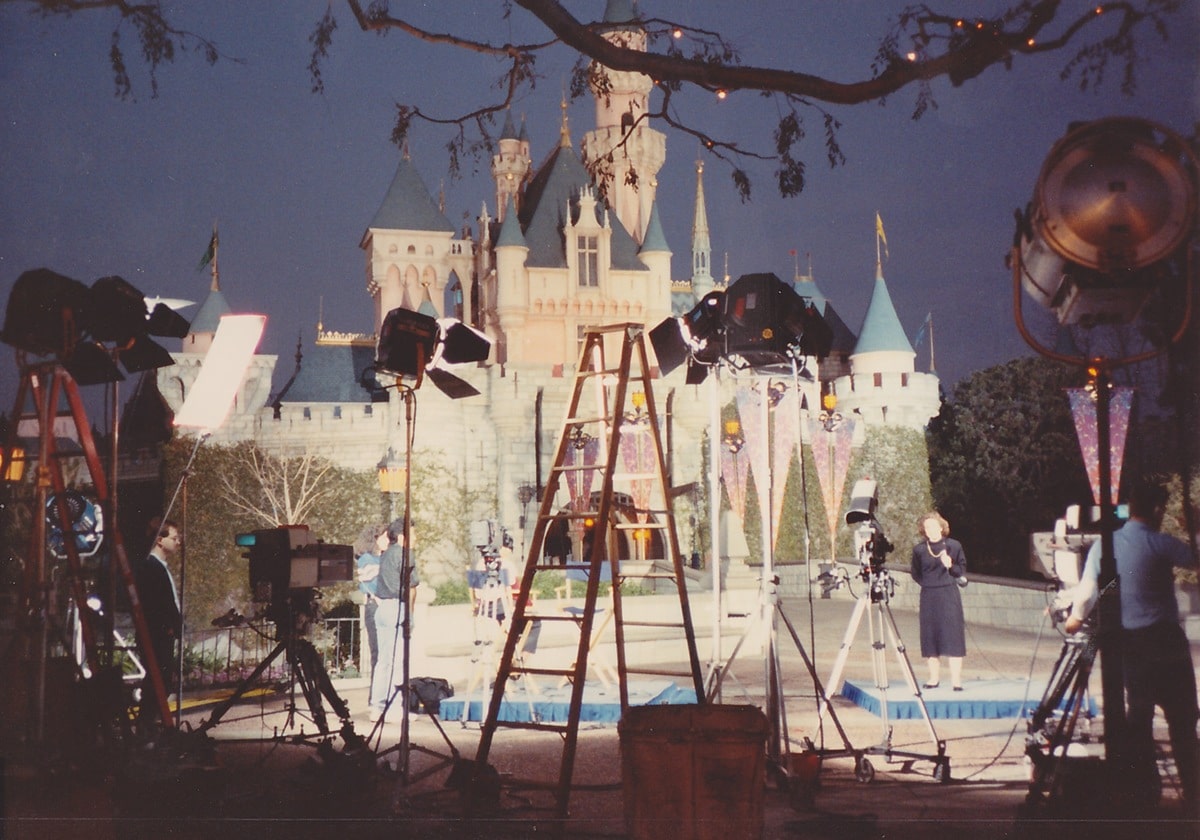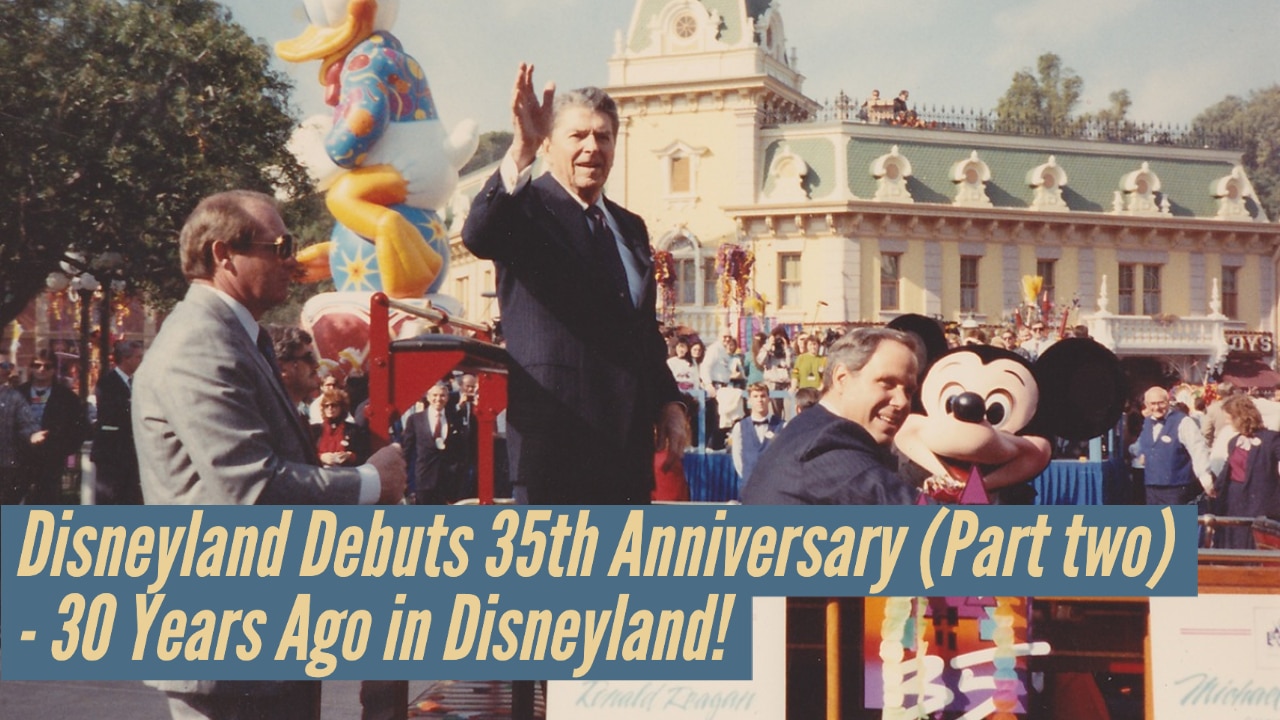Last month’s entry covered the first part of January 11, 1990, the day that kicked off Disneyland’s 35th anniversary year. Before getting to the rest of that memorable day, I do want to clear up one detail.
In the course of last month’s post I mentioned that former President Ronald Reagan’s appearance included snipers on the roofs of Main Street, USA. But I inexplicably did not include a photo showing this. To make up for that omission, here is another photo of Reagan in the cavalcade. And if you cannot see the snipers, there is a second photo with some enlarged detail.
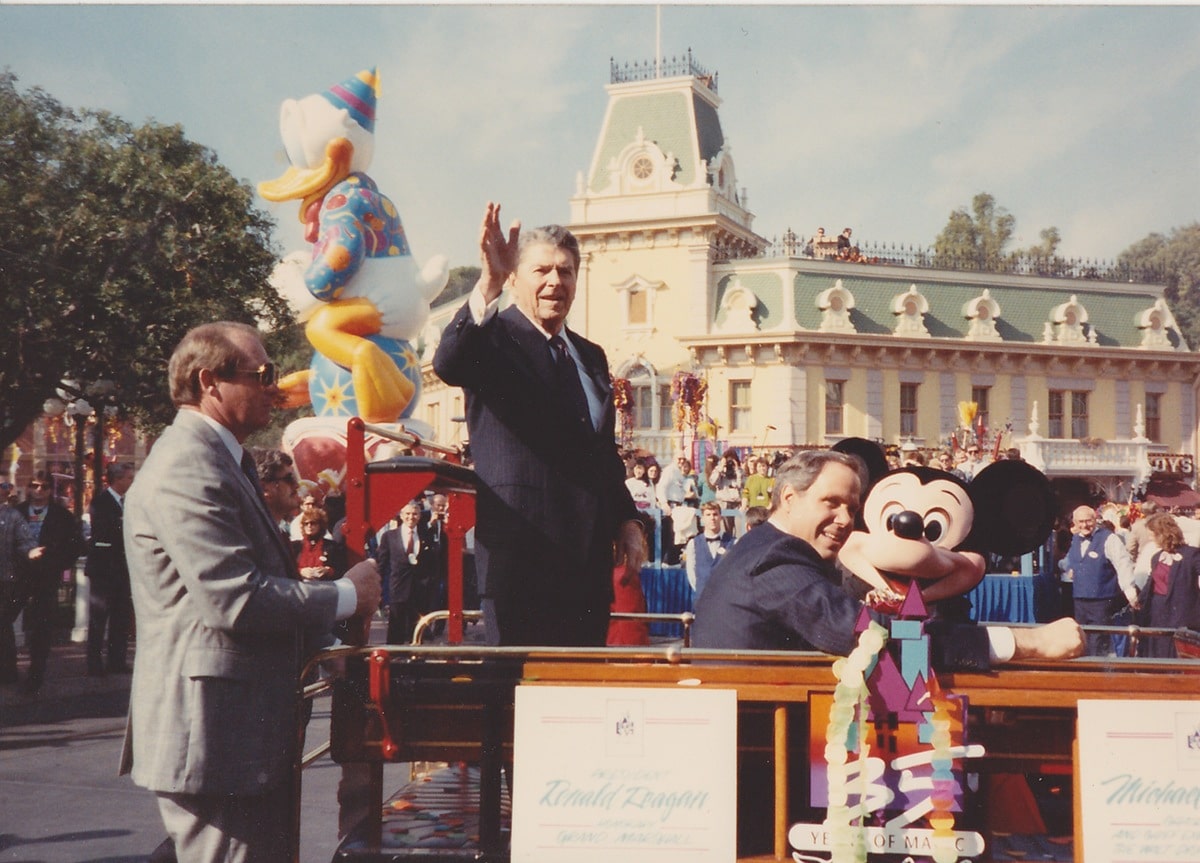
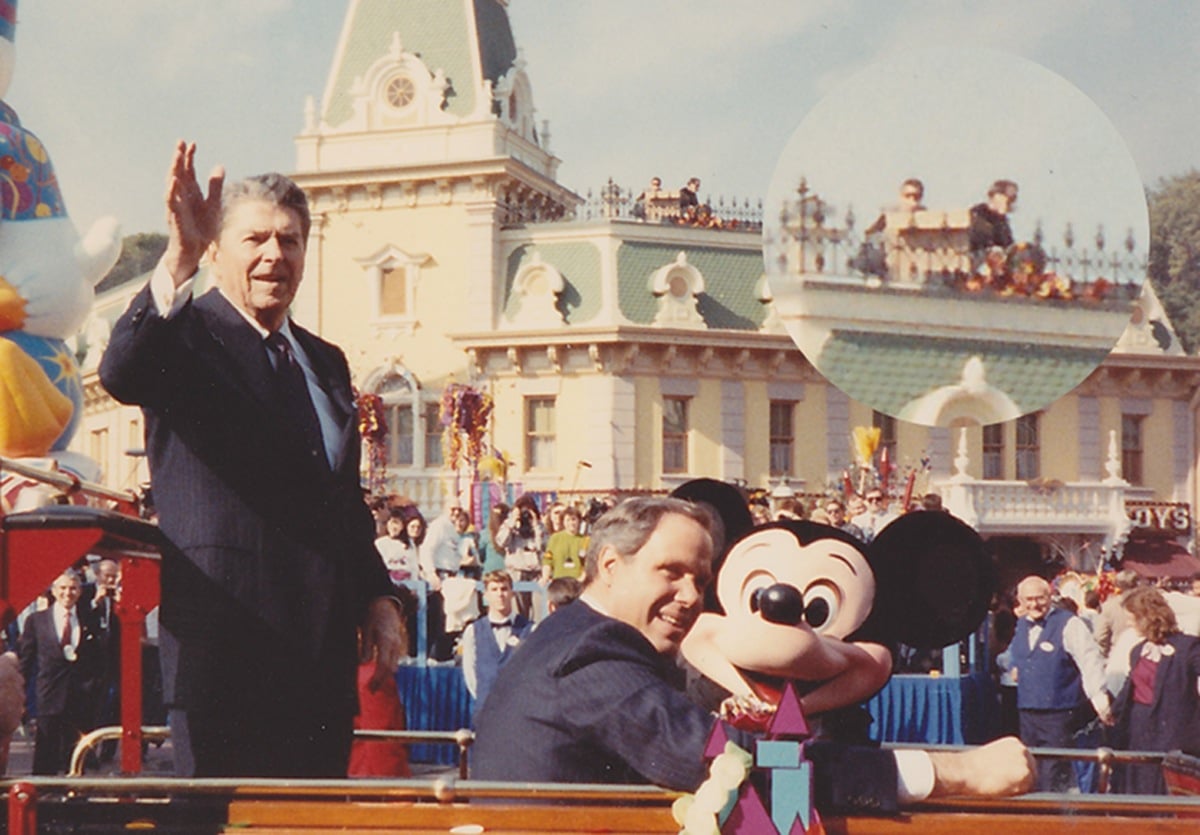
Now that that is cleared up, we can return to the events of the day. After the festivities on Town Square had finished, I made my way down Main Street. In my haste to get in I had noticed there was a great media presence out in the parking lot, but I was not prepared for what I would find spread throughout the park.
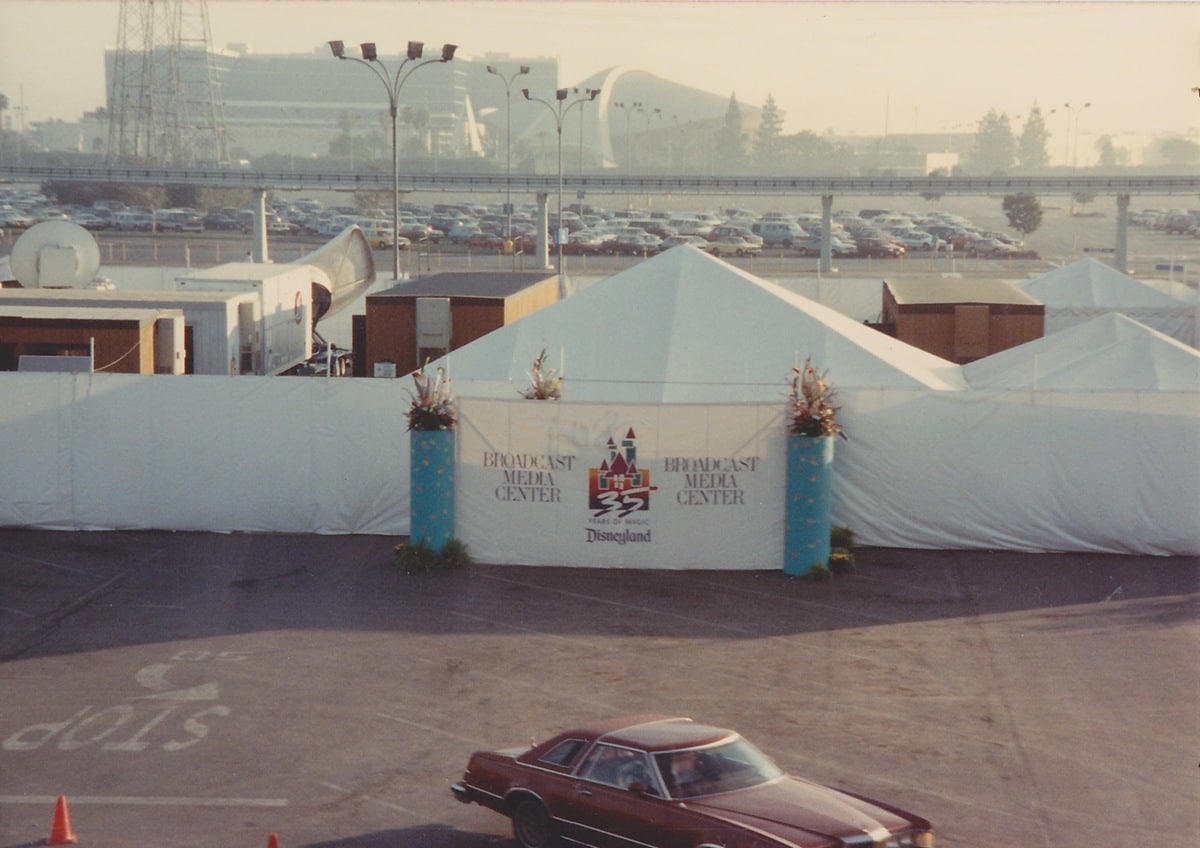
The Plaza Inn had been converted into another media center, and live radio remote booths were lined up side by side. I noticed one large broadcast booth with a familiar name attached. I had heard Bruce Williams often on TalkNet, an NBC radio talk show “block” that originally included Sally Jessy Raphael. And here he was in person!
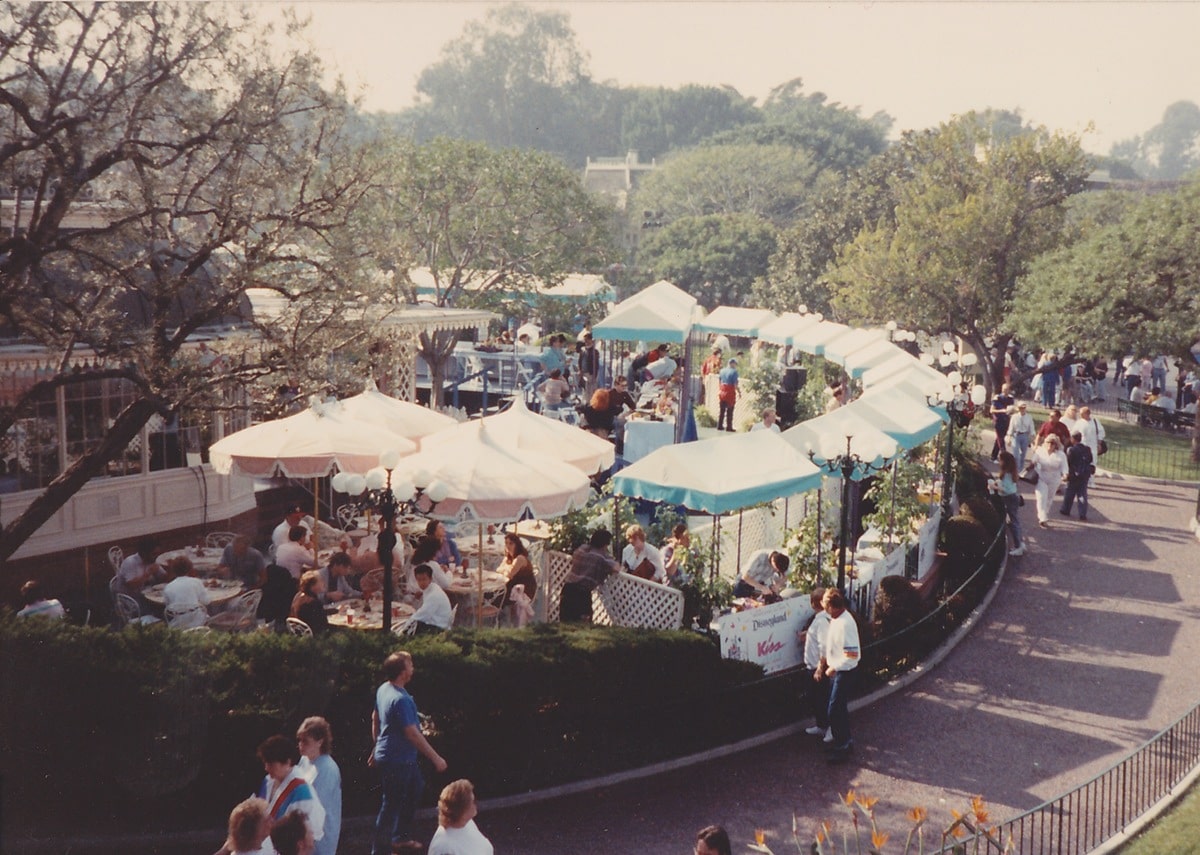
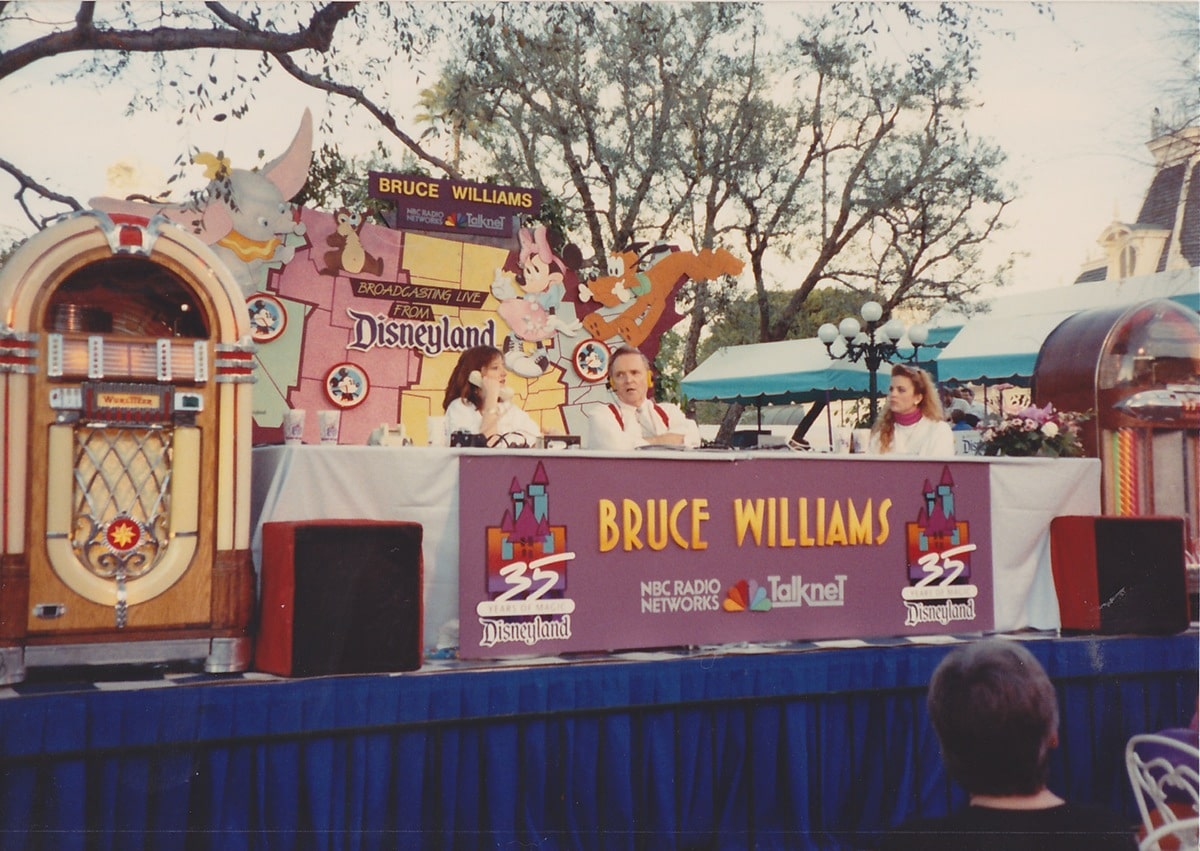
Walking past the various booths, I tried to make myself as inconspicuous as possible. Hearing a familiar voice, I stopped and gawked at a young man who sounded just like Goofy. In fact, it was the official voice of Goofy, Bill Farmer. He had been performing as Goofy for less than three years, and this was a rare early public appearance for one of the Fab Fives official voice actors.
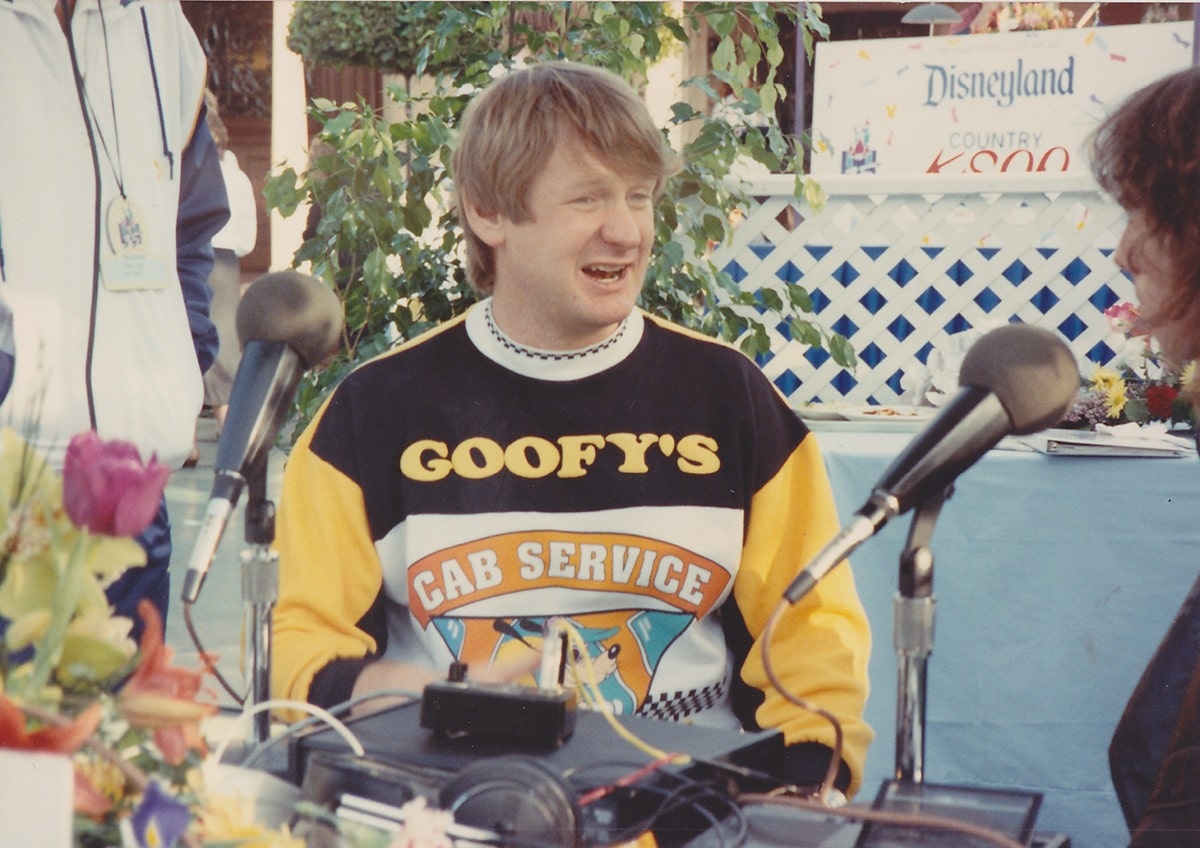
Hearing, and then seeing another performer not far away, I dropped all pretenses and became a gushing fan boy. Alan Young was sitting not three feet away from me! He was there, of course, as the voice of Scrooge McDuck. But I saw Wilbur Post, the owner of Mr. Ed, the talking horse. He was between interviews and was perfectly agreeable to pose for a photo and even sign an autograph.
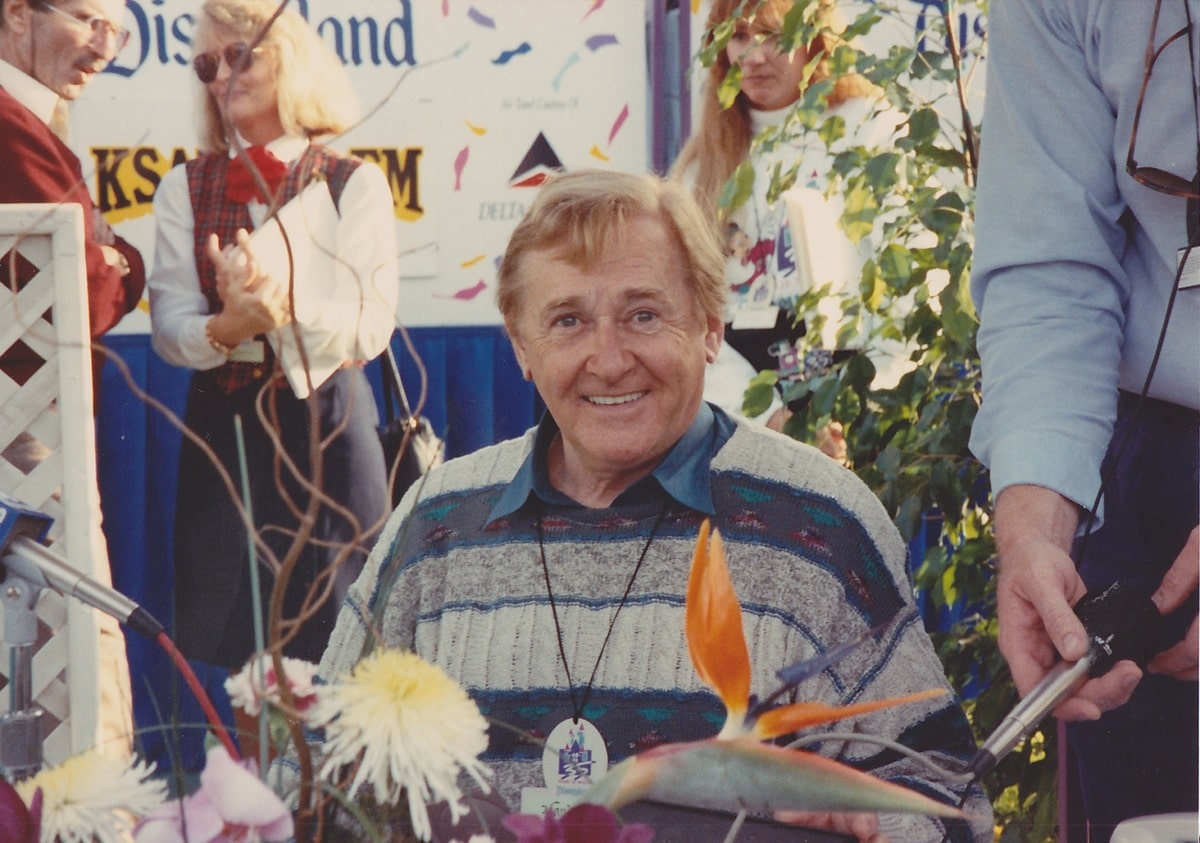
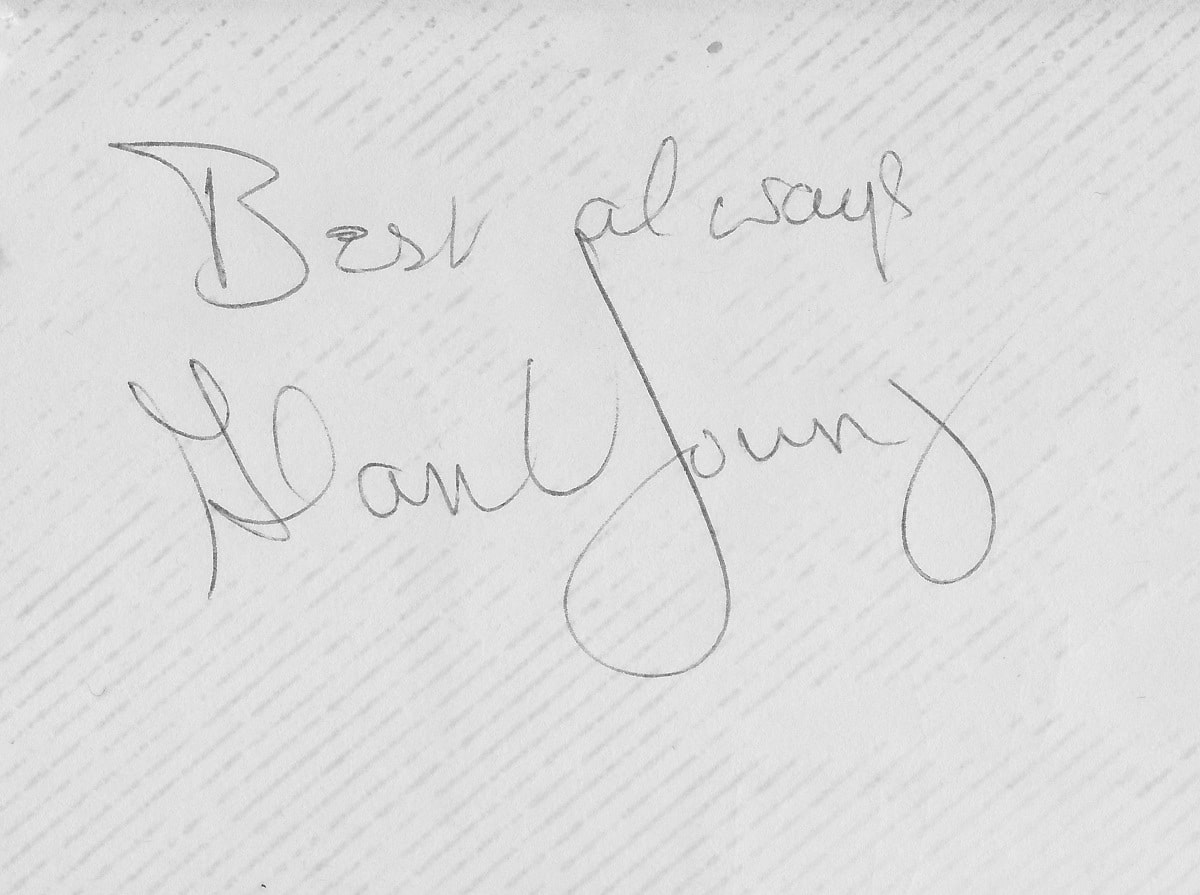
Before the era of celebrity selfies, collecting autographs was a major element of meeting the stars. I had brought along a pad of paper and a pen, “just in case.” And now it had paid off.
The next encounter was entirely unexpected. While backtracking on Main Street I came upon a lone figure giving an interview on the now largely deserted street. I immediately recognized him as Daniel Boone. Yes, I remembered him as Daniel Boone, as I was too young to have seen him on television as Davey Crockett. Incredibly, in 1990 Fess Parker could stand out in the middle of Main Street and not attract a crowd. I even moved around to take a few more photos, and then got an autograph, which was offered very graciously.
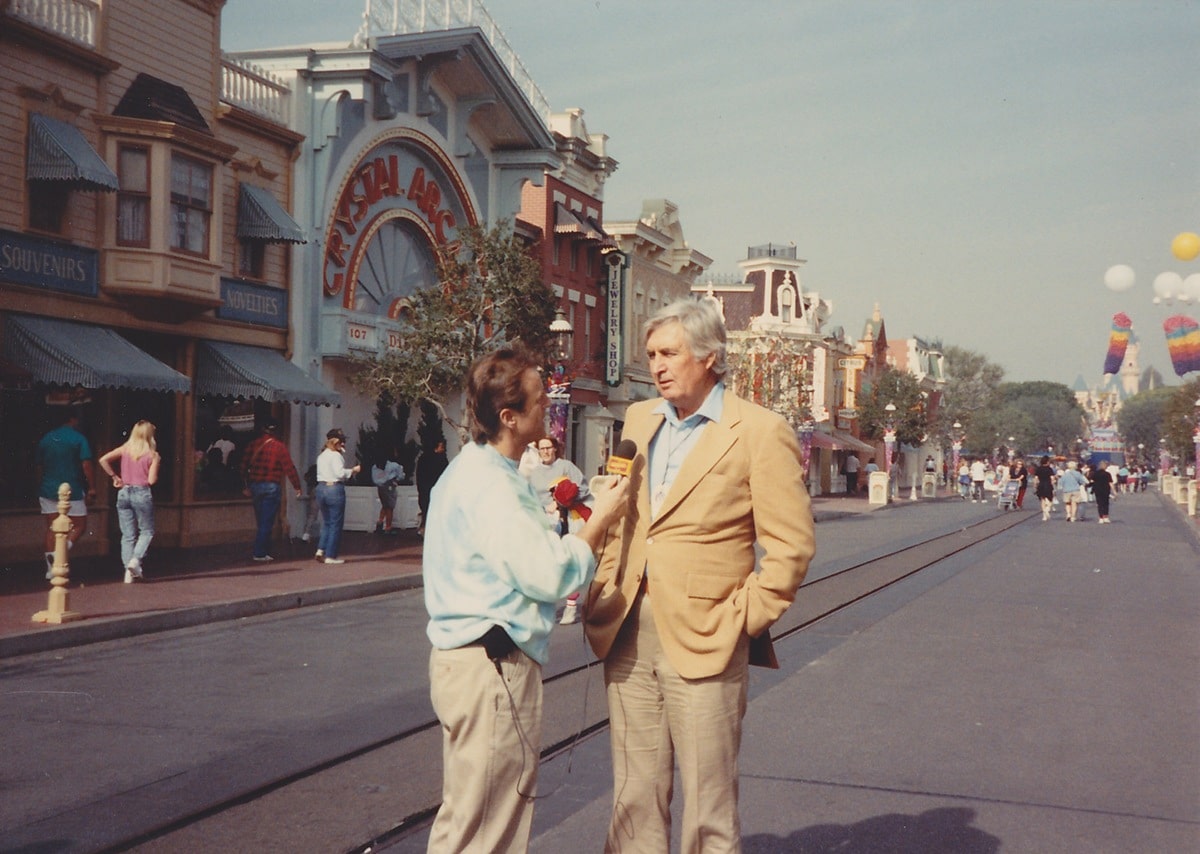
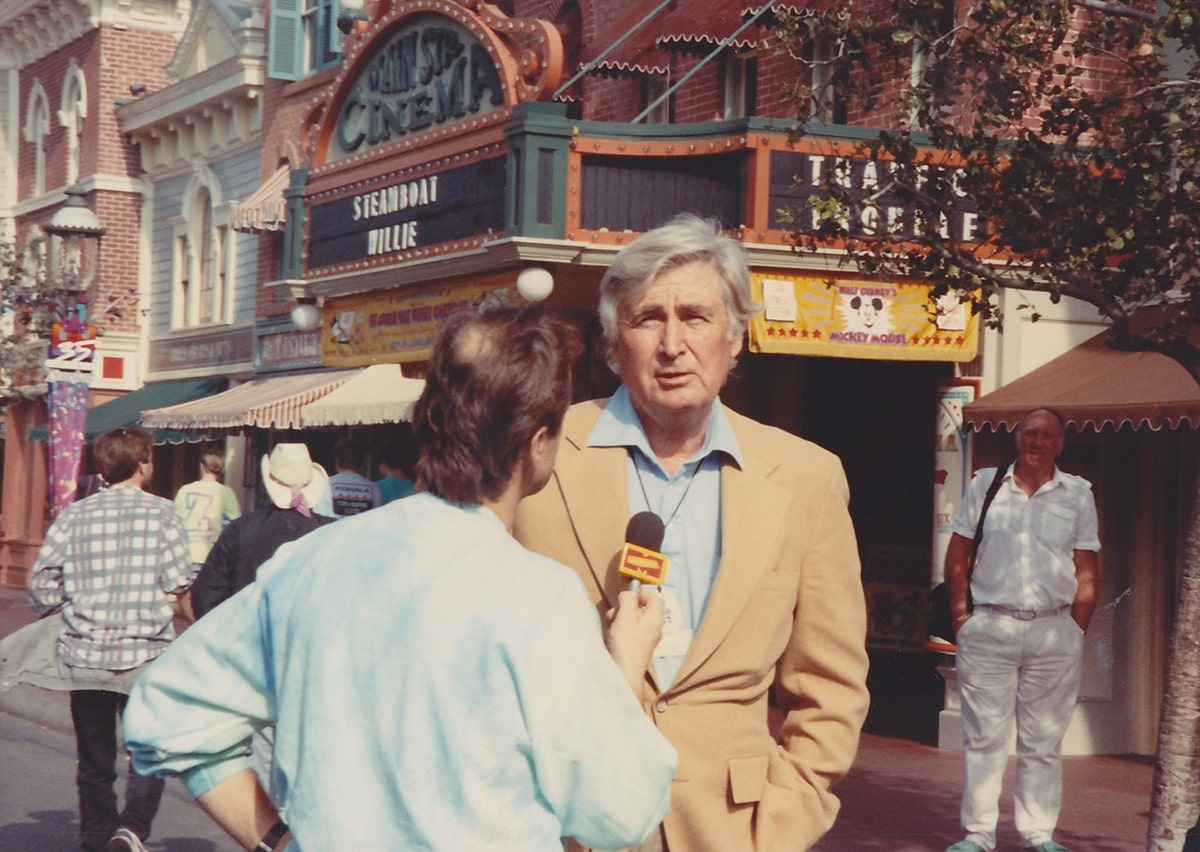

Back at the hub, I came across a dapper fellow giving interviews to a series of news outlets. This was John Hench, the legendary artist, and designer who would spend 65 years working for the Walt Disney Company. As I strained to overhear the interviewer, another reporter leaned over to me and whispered, “Who’s that?’ I tried to explain who it was, and after the interview was over, the reporter walked up to Hench, stuck out his microphone and said, “I understand you helped with Disneyland. So what did you do?” Hench gave him a bemused smile and, airily gesturing around him replied, “Oh, I contributed to that… and that… and that over there.”
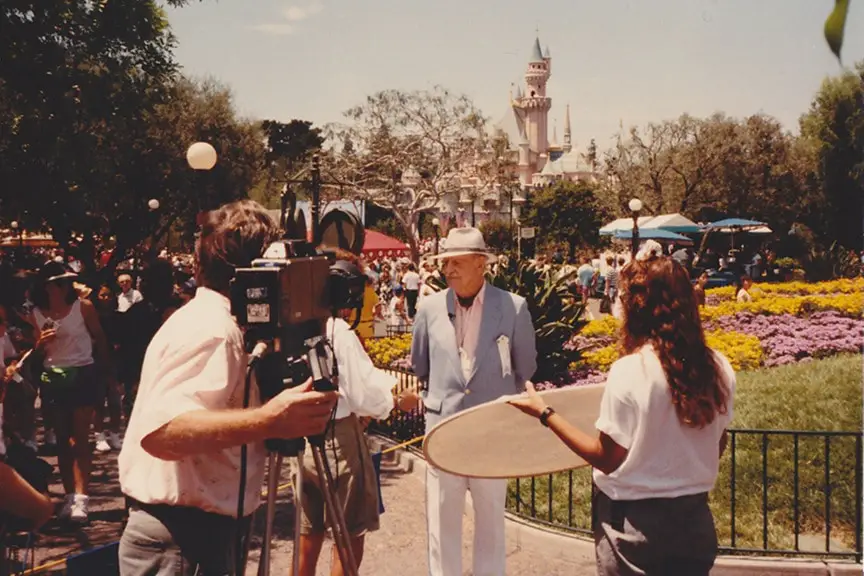
Disneyland’s hub featured a gaudy device that was dubbed the “Dream Machine.” A descendent of the 30th birthday’s Gift Giver Extraordinaire, this device had a few more tricks up its sleeve. Guests were not granted their prizes at the front gate, but rather took their winning tickets to the middle of the park to see what they had won. The machine dispensed plush toys, VHS tapes, collectors’ pins (that’s all I ever got), and even Mickey Mouse watches. One lucky winner a day received the grand prize, a new Chevrolet GEO. And the coolest thing about winning the prize was that the top of the Dream Machine actually rose up out of the ground, revealing your prize! (Although you didn’t get to drive it away—you got a certificate to collect the car at your nearest Chevy dealer.)
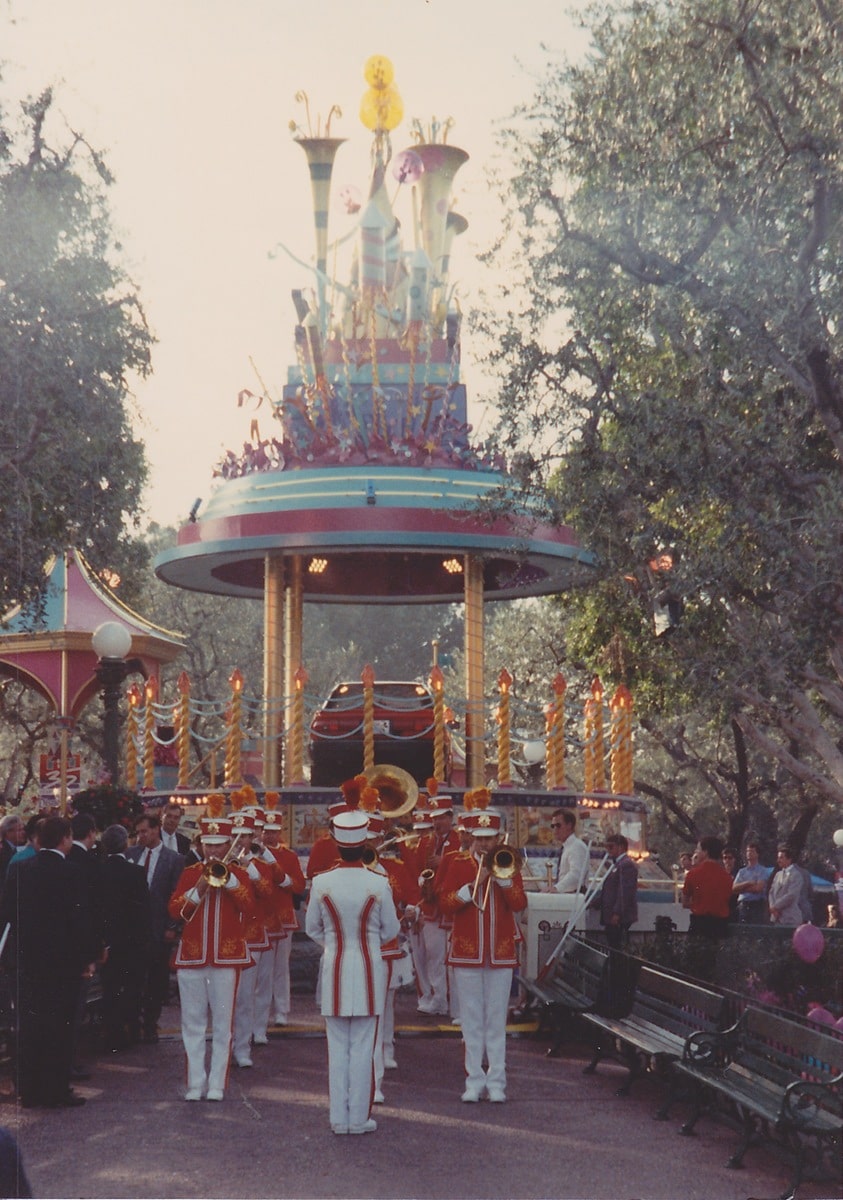
I happened to be at the Dream Machine just in time for the official dedication. In the crush of the crowd, I found myself very close to the host for the event, Disney CEO Michael Eisner. After the last fanfare sounded and the photographers departed, the crowd suddenly surged forward, and I found myself standing next to, and even jostling, Disney’s head honcho. And he did not look particularly pleased with the turn of events. It was clear that this was not a planned portion of the ceremony.
By now I was not at all shy, and so I asked Eisner for an autograph. As he hastily scrawled his signature across the pad, I helpfully suggested, “You know, I bet nobody asks the head of Paramount for his autograph.” Eisner’s possible reply will forever be lost to history, as a flying wedge of security hosts swiftly parted the crowd, enveloped Michael Eisner, and spirited him away to his next scheduled appearance.
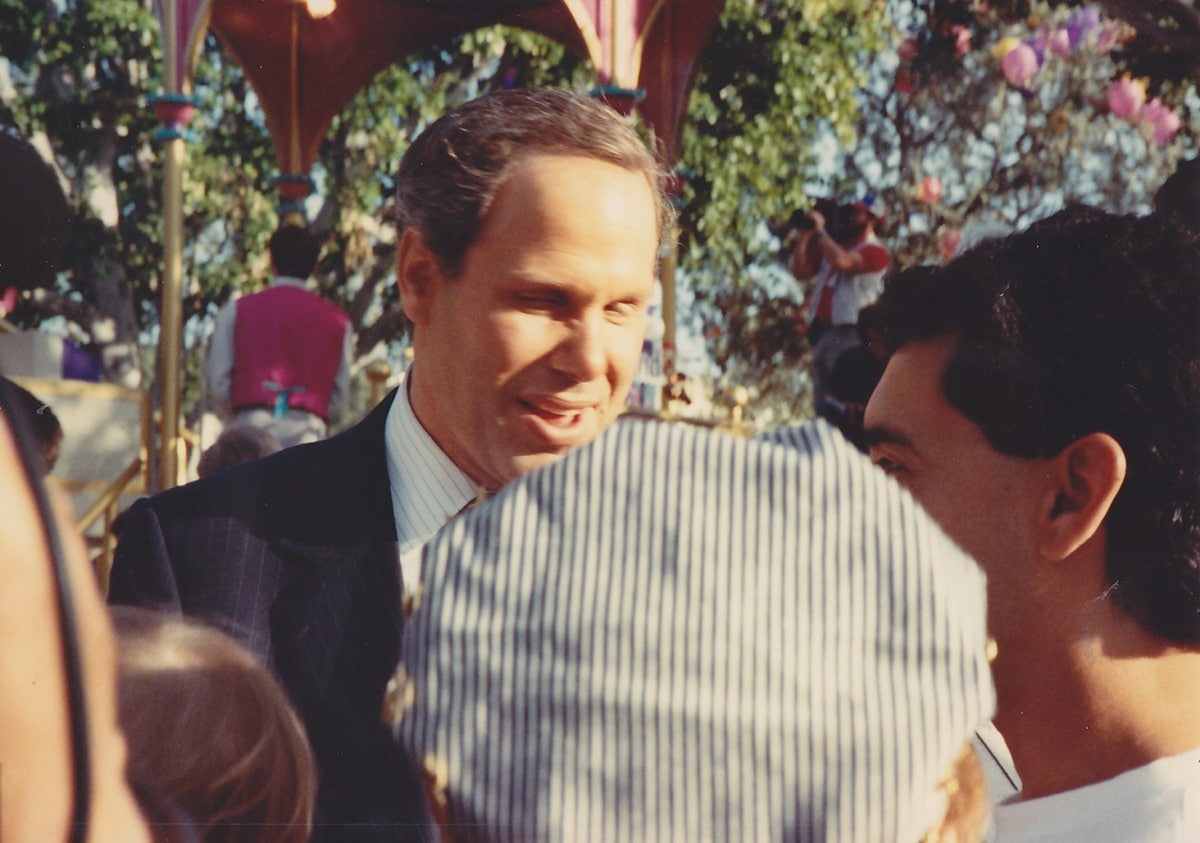
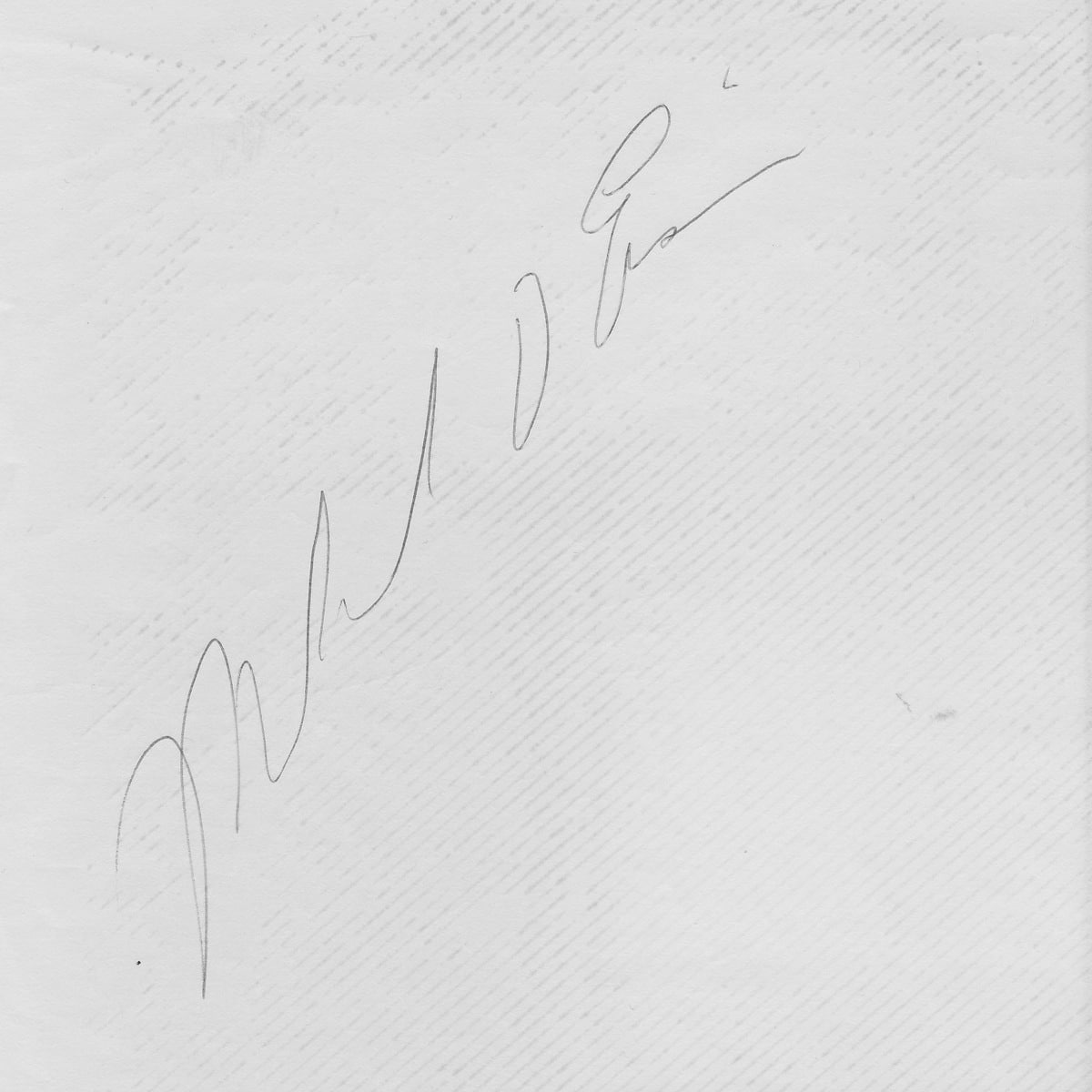
The day was winding down, but I did manage to collect two more autographs. They were from Disney’s biggest stars, and they smiled broadly as they gave them. It was the “big cheese” himself, Mickey Mouse, and his best girl, Minnie. You can always count on Mickey.

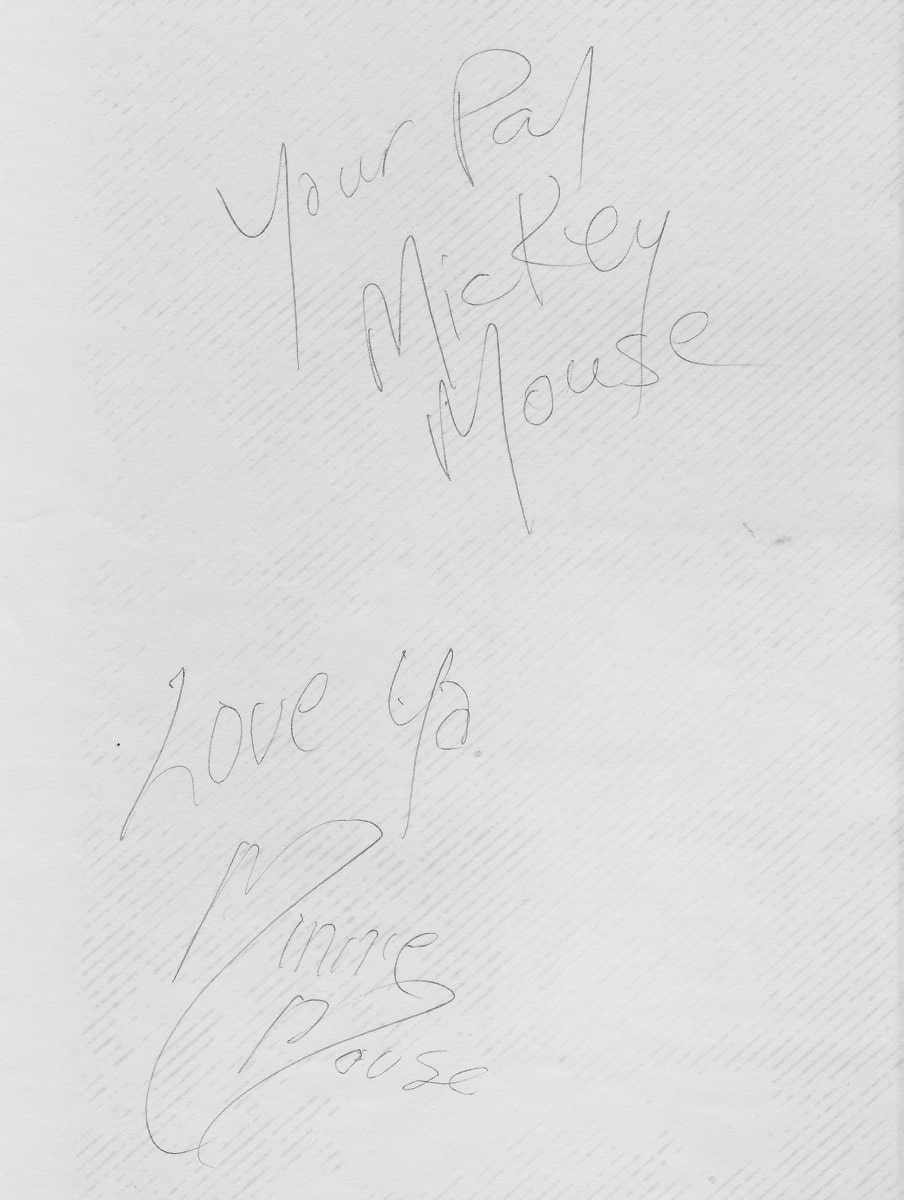
As the afternoon turned to evening, it began to get dark. I decided to end the day with a picture-perfect photograph of Sleeping Beauty Castle. I had seen they had been putting up special lighting, so I was hopeful of getting something unique. And in a way, I did. It was, after all, really a day for media, so it is fitting that my final image includes lights, a ladder, and a reporter doing her final stand-up of the day.
January 11 would prove to be the first of many memorable days at Disneyland for me. As this blog moves forward through the years not every entry will be as momentous. But they should all prove to be fun. And isn’t that the least one should expect from the Happiest Place on Earth?
